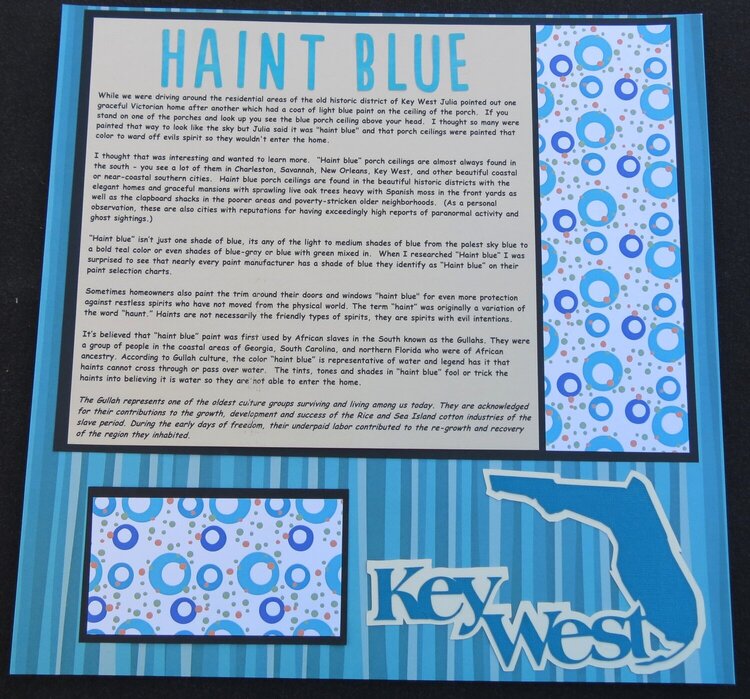

 Give a Cheer
Give a Cheer
While we were driving around the residential areas of the old historic district of Key West Julia pointed out one graceful Victorian home after another which had a coat of light blue paint on the ceiling of the porch. If you stand on one of the porches and look up you see the blue porch ceiling above your head. I thought so many were painted that way to look like the sky but Julia said it was "haint blue" and that porch ceilings were painted that color to ward off evils spirit so they wouldn't enter the home.
I thought that was interesting and wanted to learn more. “Haint blue” porch ceilings are almost always found in the south - you see a lot of them in Charleston, Savannah, New Orleans, Key West, and other beautiful coastal or near-coastal southern cities. Haint blue porch ceilings are found in the beautiful historic districts with the elegant homes and graceful mansions with sprawling live oak trees heavy with Spanish moss in the front yards as well as the clapboard shacks in the poorer areas and poverty-stricken older neighborhoods. (As a personal observation, these are also cities with reputations for having exceedingly high reports of paranormal activity and ghost sightings.)
“Haint blue” isn't just one shade of blue, its any of the light to medium shades of blue from the palest sky blue to a bold teal color or even shades of blue-gray or blue with green mixed in. When I researched “Haint blue” I was surprised to see that nearly every paint manufacturer has a shade of blue they identify as “Haint blue” on their paint selection charts.
Sometimes homeowners also paint the trim around their doors and windows "haint blue" for even more protection against restless spirits who have not moved from the physical world. The term “haint” was originally a variation of the word “haunt.” Haints are not necessarily the friendly types of spirits, they are spirits with evil intentions.
It's believed that “haint blue” paint was first used by African slaves in the South known as the Gullahs. They were a group of people in the coastal areas of Georgia, South Carolina, and northern Florida who were of African ancestry. According to Gullah culture, the color “haint blue” is representative of water and legend has it that haints cannot cross through or pass over water. The tints, tones and shades in “haint blue” fool or trick the haints into believing it is water so they are not able to enter the home.
The Gullah represents one of the oldest culture groups surviving and living among us today. They are acknowledged for their contributions to the growth, development and success of the Rice and Sea Island cotton industries of the slave period. During the early days of freedom, their underpaid labor contributed to the re-growth and recovery of the region they inhabited.
No products have been added to this project.
Thanks for spreading positivity!
March 18, 2013
February 16, 2013
January 31, 2013
January 24, 2013
January 18, 2013
January 17, 2013
January 16, 2013
January 14, 2013
January 13, 2013
January 12, 2013
January 12, 2013
January 12, 2013
January 12, 2013
January 11, 2013
January 11, 2013
January 11, 2013
January 11, 2013
January 11, 2013
January 11, 2013
January 11, 2013
January 11, 2013
January 11, 2013
January 11, 2013
January 11, 2013
January 11, 2013
January 11, 2013
January 11, 2013
January 11, 2013
January 11, 2013
January 11, 2013
January 11, 2013
January 11, 2013